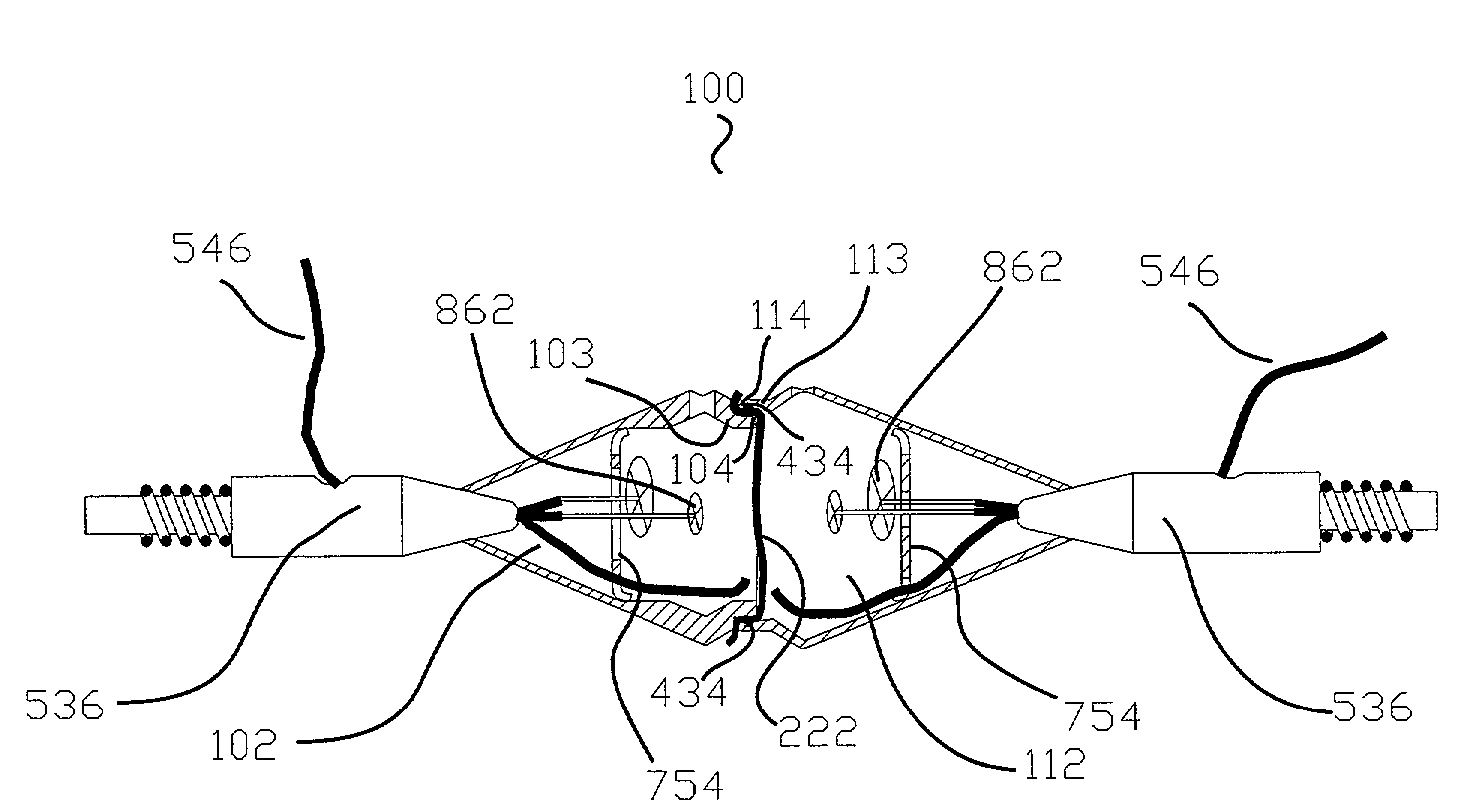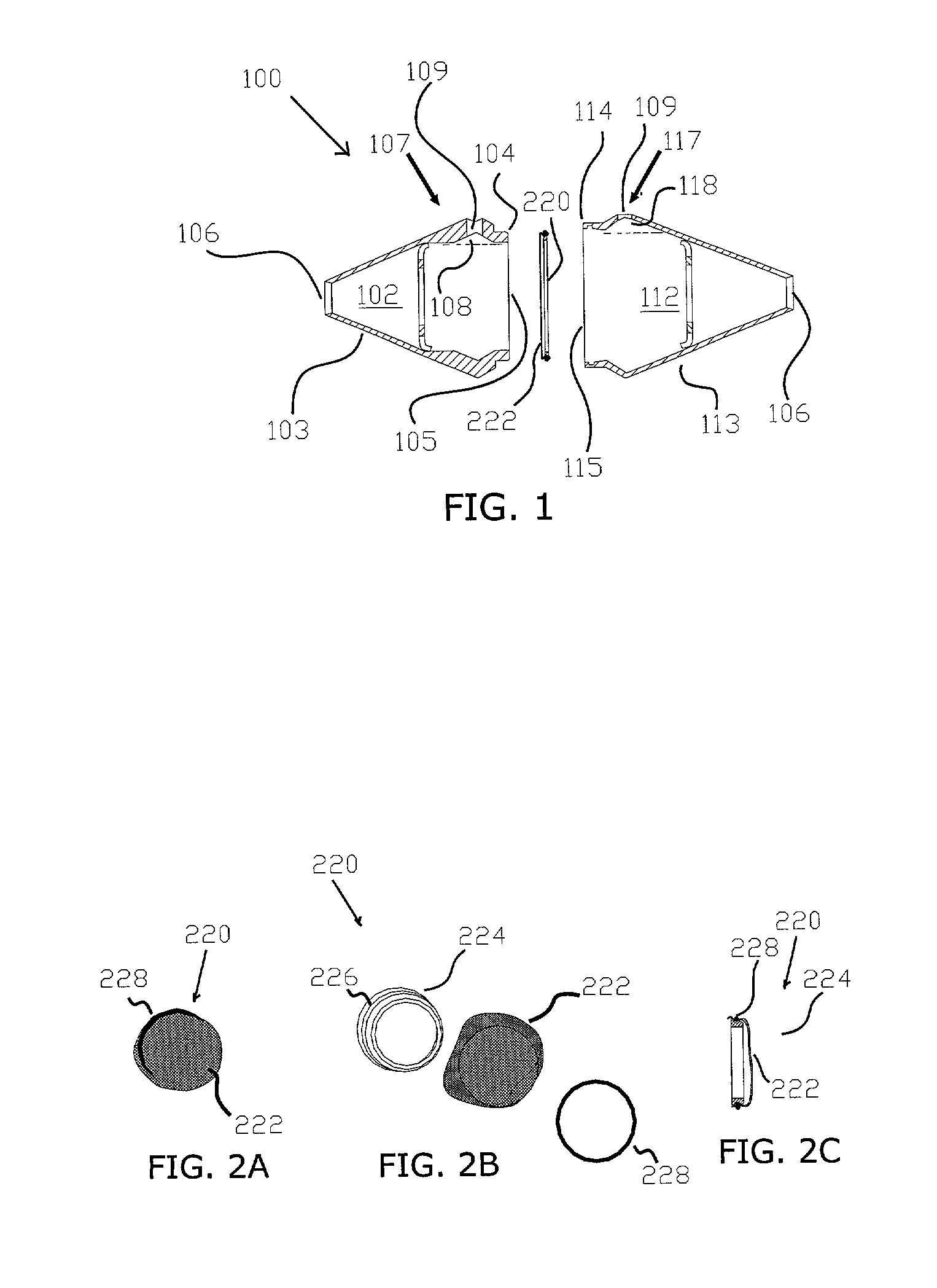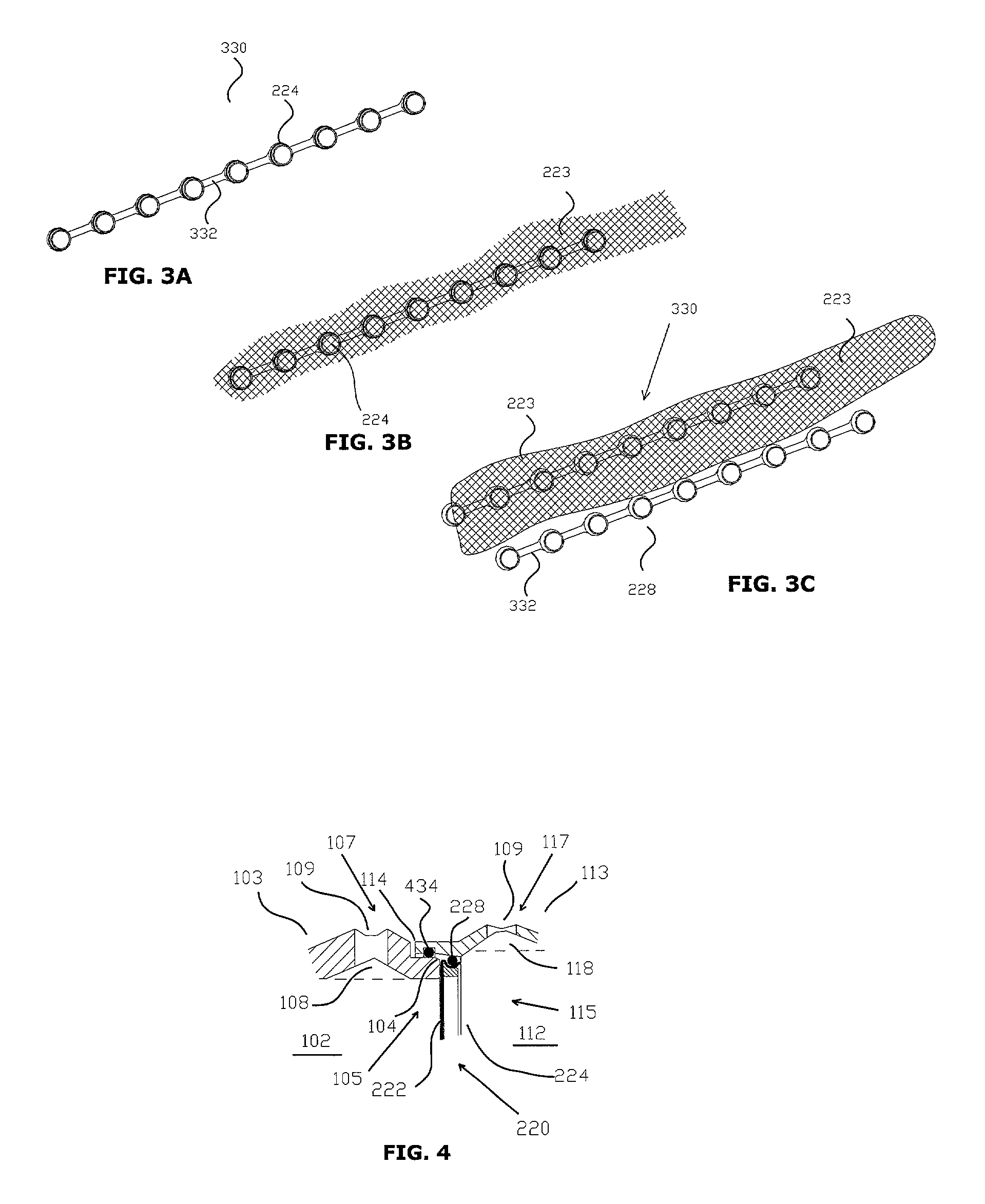Apparatus and method for high throughput analysis of compound-membrane interactions
a technology of compound and membrane interaction, applied in the field of highthroughput investigation and screening of compound interactions, can solve the problems of difficult to conduct highthroughput analysis, and difficult to conduct highthroughput analysis, and achieve the effect of facilitating the development of new compounds
- Summary
- Abstract
- Description
- Claims
- Application Information
AI Technical Summary
Benefits of technology
Problems solved by technology
Method used
Image
Examples
Embodiment Construction
[0078]The terms listed below are given the following definitions for use in this specification.[0079]Absorption enhancer is a chemical entity (compound) that facilitates the absorption of a tested compound.[0080]Absorption inhibitor is a chemical entity (compound) that inhibits the absorption of a tested compound.[0081]Apical membrane is a part of the cell plasma membrane of polarized cells facing the external environment.[0082]Baso-lateral membrane is a part of the cell plasma membrane covering the base and sides of the polarized cells.[0083]Buccal means related to the mouth or hollow part of the cheek.[0084]Communicates means that one element is able to receive information or material from another element. For example, an opening that communicates with a chamber is capable of receiving fluid from or delivering fluid to the chamber.[0085]Confluency means that all cells in a tissue culture are in complete contact with other adjacent cells and no available substrate is left uncovered...
PUM
| Property | Measurement | Unit |
|---|---|---|
| Volume | aaaaa | aaaaa |
| Shape | aaaaa | aaaaa |
Abstract
Description
Claims
Application Information
 Login to View More
Login to View More - R&D
- Intellectual Property
- Life Sciences
- Materials
- Tech Scout
- Unparalleled Data Quality
- Higher Quality Content
- 60% Fewer Hallucinations
Browse by: Latest US Patents, China's latest patents, Technical Efficacy Thesaurus, Application Domain, Technology Topic, Popular Technical Reports.
© 2025 PatSnap. All rights reserved.Legal|Privacy policy|Modern Slavery Act Transparency Statement|Sitemap|About US| Contact US: help@patsnap.com



